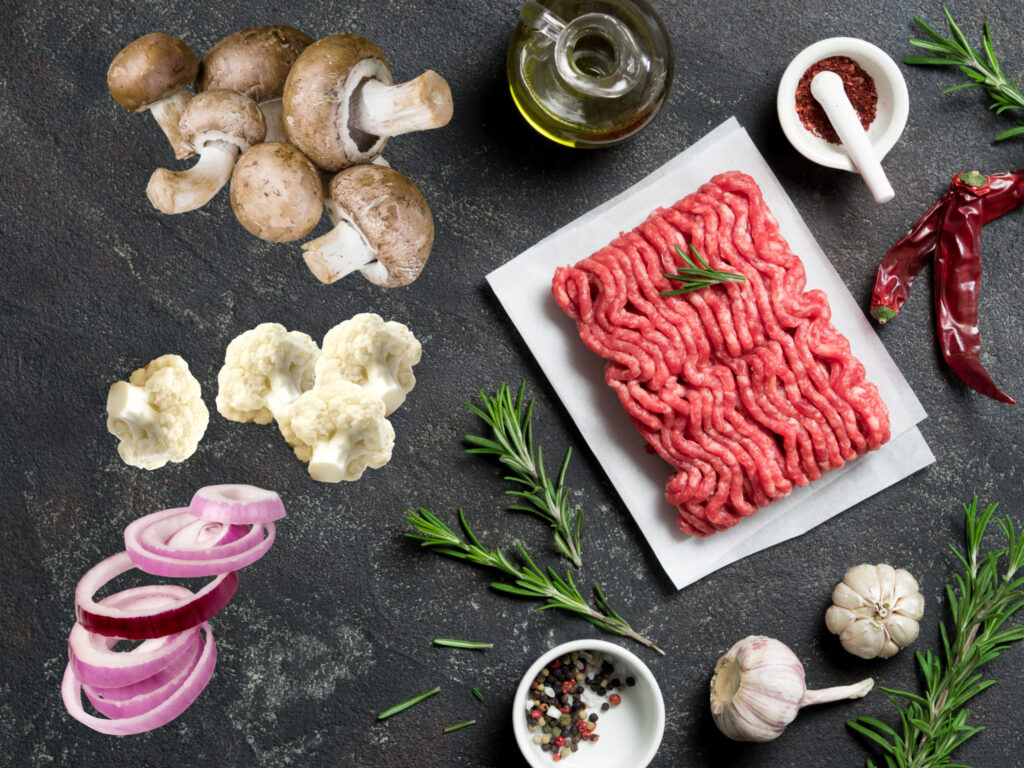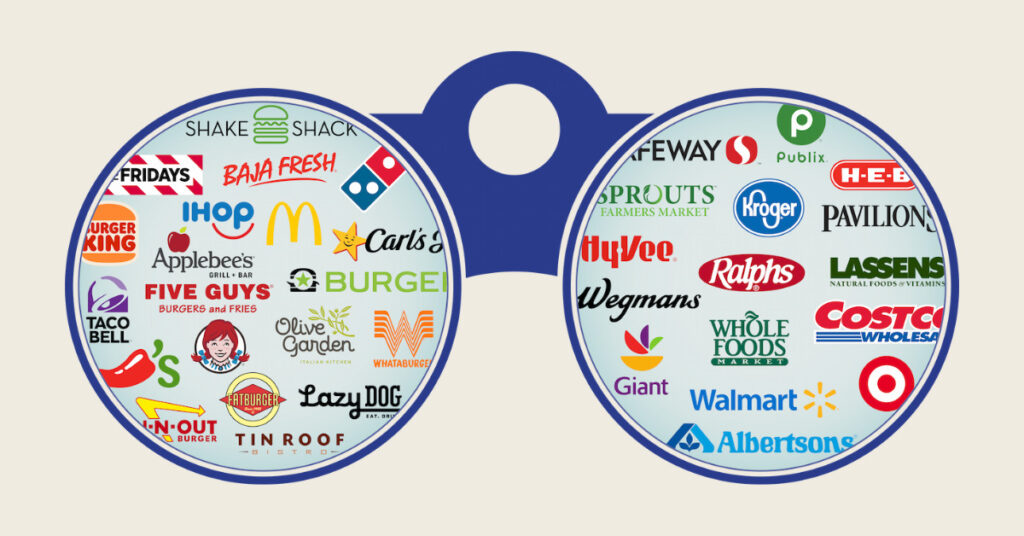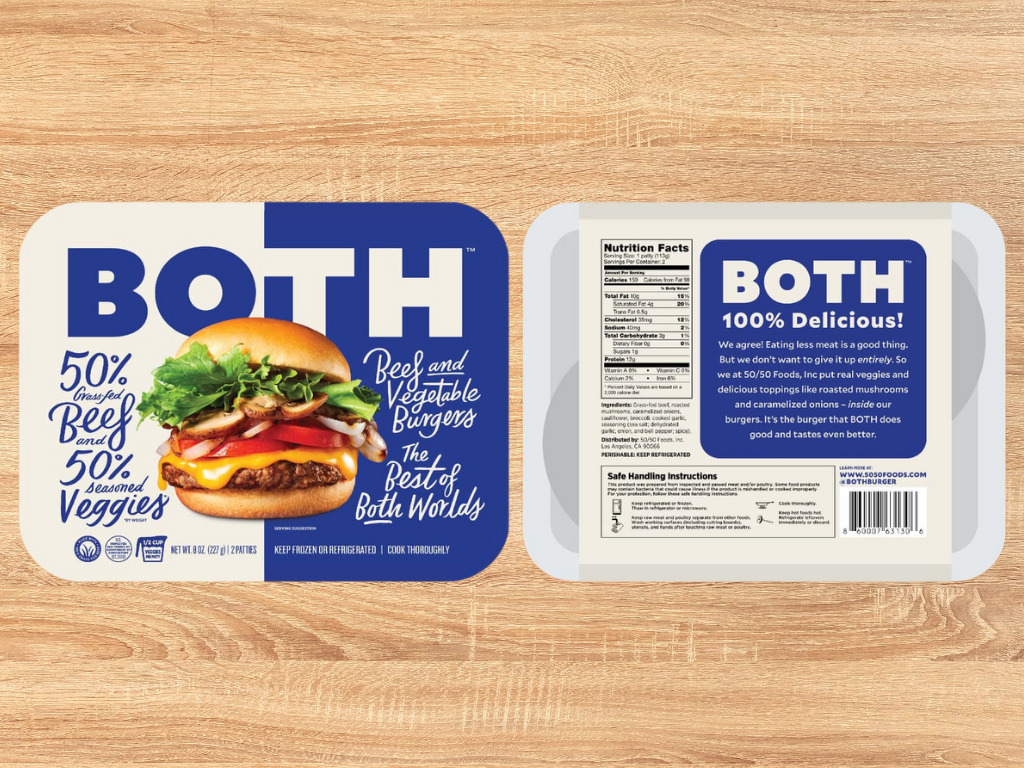50/50 Foods Founder on Flex Meat: ‘We’re the Google to Beyond and Impossible’s Yahoo’
7 Mins Read
Andrew Arentowicz, CEO of blended meat startup 50/50 Foods Inc explains who his target consumer is, why blended meat has failed before, why the category has a marketing problem and his take on the animal welfare question.
This article is part of our content series exploring the world of hybrid and blended meat products – those blending cultivated or conventional proteins with plant-based ingredients, respectively, and why some think this is the future of reducing meat consumption.
Americans consume too much meat. This isn’t me trying to anger anyone – it’s a literal fact. The US population eats 233.3g of meat a day, which is almost three times the maximum recommended amount by the Eat-Lancet Commission to achieve the UN’s Sustainable Development Goals and meet the targets of the 2015 Paris Agreement.
While plant-based, cultivated and fermented meat companies have all been trying to get consumers to see the effect their diet has on the environment, many don’t. In fact, while vegan meat alternatives have undergone a sales and PR hit, the FAO – you know, the UN food body that deliberately censored data about livestock farming’s impact on climate change – says we will be eating 14% more meat by 2030.
So with plant-based meat still reeling from financial setbacks, cultivated meat in touch regulatory landscape, and fermentation-based proteins still a nascent category, where does that leave us? The answer might be going back to animal-derived meat.
At least a little bit.
Some are proposing blended or hybrid meats as a solution. Blended meat refers to a mix of traditional animal protein with plant-based ingredients, while hybrid combines the latter with cultivated meat. A bunch of companies are already working in this sector, hoping to influence people to reduce meat consumption by eating the same amount of meat products, albeit with less meat.
Consumer research shows taste is paramount
Here’s the thing. Consumer perceptions of these products are very much informed by traditional meat, and while price and health are important drivers, nothing beats flavour. Research has shown that taste is the number one factor for people choosing to eat or avoid meat alternatives. Last year, an 8,000-person survey covering the US, UK, France and Germany found that about half of respondents “greatly preferred” the taste of animal protein over plant-based analogues.
Similarly, a Kerry Group report published earlier this year – surveying 1,500 consumers in the US, UK, Australia and Brazil – suggested that people have greater taste expectations for plant-based burgers than conventional ones, adding that great flavour is key to the sector’s success.
For blended products, this is where the opportunity lies. A peer-reviewed consumer study published in March 2022 – using data from September 2019 with a relatively small size of 172 US participants – revealed that Americans still preferred beef a 100% beef burger over any other alternatives. But when it came to three substitutes – a pea protein patty, a yeast-based ‘animal-like’ patty and a blend of animal beef and mushrooms – consumers chose the blended burger in a blind taste test.
The blended burger was 70% animal beef and 30% mushrooms. One company proposing a different share is 50/50 Foods, Inc – no points for guessing its proportion. The Los Angeles-based startup says it’s the only USDA-approved 50/50 burger, which is comprised 50% beef and 50% vegetables (mushrooms, onions, cauliflower, broccoli and garlic), along with spices and seasonings.
This way, Americans can “have their meat and eat it too”, as 50/50 Foods founder Andrew Arentowicz puts it. “The global food system accounts for approximately one-third of total GHG emissions, with beef being the #1 emitter, by a country mile,” he tells me. “How you get Americans to eat less meat is the biggest question in need of an answer, and we think we have it.”
Arentowicz explains that cutting beef consumption in half can “actually move the needle” on climate change. The comment chimes with research showing that meat and dairy cause twice as many emissions as plant-based foods. And a study published last month found that replacing half our animal product consumption with plant-based alternatives could reduce agriculture and land use emissions by 31%, halt forest and natural land destruction, and double overall climates – although if you’re American, your meat intake needs to go down by 82% if you want to avoid climate disasters.
And it’s because, despite 95% of Americans continuing to eat meat, 74% don’t think eating less of it will help the environment. It’s these consumers 50/50 Foods is targeting. “Not to mention, moms who want their kids to eat more veggies,” Arentowicz adds.
Why blended meat hasn’t worked – yet

It’s not like companies haven’t tried selling blended meat before – they’ve just… not worked? For example, German retailer Aldi got backlash for launching a BBQ Flexitarian Burger made from beef and beans in 2019 (it’s nowhere to be seen anymore). Tesco launched a Lean & Greens range combining chicken with vegetables in 2021 (the reviews are not great, either for taste or misleading messaging).
And sure, private-label supermarket products aren’t always the most flavourful. Well, Tyson – the world’s second-largest meat company – launched blended beef-pea protein burgers and nuggets under its Raised & Rooted range in the summer of 2019, only to pull the products in December 2020. “The Raised & Rooted Blend will be discontinued as we constantly evaluate products working alongside our customers and consumers,” a Tyson spokesperson said at the time.
So why would these products work now? Arentowicz has an interesting analogy. “You might remember that ‘search was dead’ before Google came along – InfoSeek, Ask Jeeves, Yahoo Search all failed,” he reminds me. “Sometimes, you need to get it right before consumers will buy it.
“Tyson’s Raised & Rooted blended burger said they were ‘beef and pea protein isolate’ burgers. Who wants to eat – let alone buy – pea protein isolate?” he wonders. “Additionally, timing helps. Processed plant [meat] like Beyond and Impossible is struggling, and cultivated meat is still decades away from viability. So I think the timing for a flexitarian category is now.” [Although only 6% of Americans followed a flexitarian diet last year, while 5% adopted a ‘low-carbon footprint/sustainable diet.]
Asked if 50/50 Foods has conducted any consumer trials, Arentowicz says: “Yes. Lots. People almost universally love our 50/50 burger because it tastes great.” Why, you ask? “Because we put flavour-enhancing toppings – like roasted mushrooms, caramelised onions, and roasted garlic – inside our burgers.”
In that consumer study where blended burgers came out on top in the blind taste test, people actually chose the yeast protein over the blended in an informed taste test, where they knew what the products were (the pea protein patty still came last). “When consumers know more about the ingredients of the blended burger, the demand decreases,” concluded the study.
As mentioned above, online reviews of Tesco’s blended meat range show that people are confused by the labels. This is a marketing problem, and Arentowicz says the solution might be in the name. “I don’t like the word ‘blended’ or ‘hybrid’, and I am hoping the leaders in this space – the handful of us – can rally around a more appealing category name. I don’t think we have it yet, but I think ‘flex’ or ‘flex meat’ (for flexitarianism) is the best we’ve got at the moment.” he says. “But I’m open to any suggestions, lol.”
The climate and animal welfare arguments

50/50, whose first product is a grass-fed Angus beef burger, plans to create half-and-half hot dogs and chicken nuggets too. Grass-fed beef currently makes up about 4% of US beef sales, and according to a 2017 report, 75-80% of grass-fed beef sold stateside is grown abroad (Angus beef itself is native to the UK) – this pushes up the product’s environmental footprint. One study estimates that grain-fed beef can have a 67.5% lower carbon footprint than grass-fed.
Arentowicz disputes these numbers, explaining that it isn’t “settled research”, pointing to a story explaining why (albeit by a meat company). But, like 50/50 Foods’ meat, he remains flexible: “We are beef-agnostic. Our clients dictate which beef they want to use. We currently use grass-fed beef in our retail product, but that’s a personal choice at this particular juncture of our business.”
Even if you put the climate argument aside for a second, how does blended meat fare with the animal slaughter question? “If animal welfare is your only issue, I have total respect for your position and argument,” he notes. “But asking everyone to turn into a vegetarian is an impossible goal. At least today it is, and we need bold solutions to big problems today.”
He adds: “I’m too practical to let perfect be the enemy of the good. Cutting beef consumption in half will save lots of animals, so we’re technically on the same team.” Arentowicz declined to go into specific details about how the company is funded, but offered: “Obviously, our investors are very bullish on our potential.”
So where can we find 50/50 Foods’ blended meat? Restaurants? Supermarkets? Both? On its website, the startup has a binocular-shaped graphic that serves as a future, ahem, vision for its footprint – which seems to be both in retail and foodservice. This is something Arentowicz confirms. “The mission is every menu, every shelf,” he says. “And our timeline is as soon as humanly possible.”



